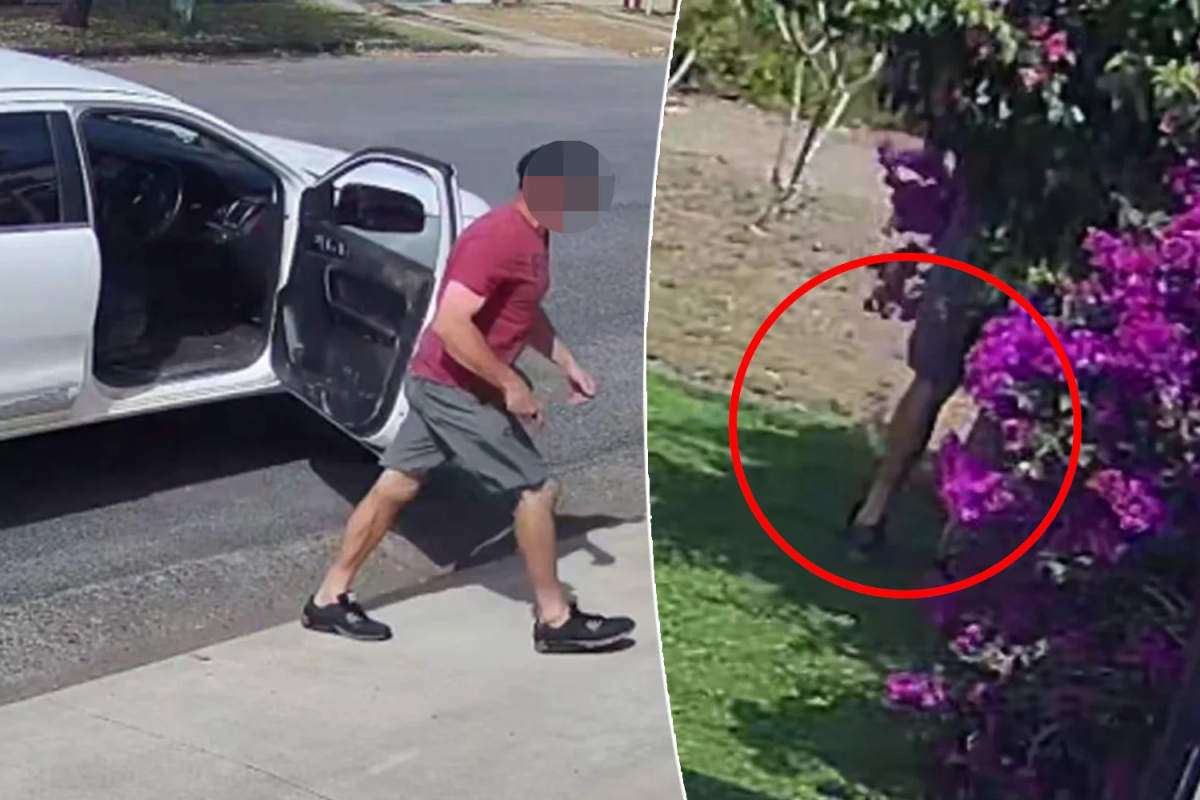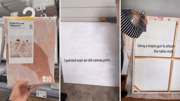
Some crimes leave scars far beyond their dollar value.
When a Queensland woman watched her beloved bougainvillea hacked apart in broad daylight, it wasn’t just her garden that suffered—it was her sense of safety.
The incident exposed an unsettling truth: even the most ordinary front yards are now battlegrounds for opportunistic thieves.
The theft unfolded in Cairns, where a ute driver casually parked, strolled up to the home, and clipped a large branch from the vibrant flowering plant with secateurs.
He tossed it into his Ford Ranger before driving off, leaving the homeowner stunned and furious.
Her response on social media quickly struck a nerve with Australians across the country, many of whom had faced similar invasions of their personal space.
'To the lowlife who decided to help himself to my bougainvillea today. How about you have the balls to ask next time?'
But this was no isolated act of mischief.
The Australian Bureau of Statistics revealed that 2024 saw 595,660 recorded victims of theft—the highest figure since 2003.
More than half of these cases occurred in residential areas, with 61 per cent of incidents targeting homes rather than businesses or public places.
The rise followed the easing of pandemic restrictions, when opportunities for opportunistic crime surged once again.
And it seems plants are becoming hot property.
Why target bougainvilleas?
These thorny South American natives are loved for their spectacular displays of purple, pink, and white bracts.
They thrive in harsh conditions, are drought tolerant, and once established, provide colour and cover for years—making them both beautiful and practical.
For thieves, however, the appeal is even simpler: one stolen branch can grow into a brand new plant.
The bougainvillea dilemma
While beautiful, these South American natives are considered problematic in Australia.
They're vigorous growers with vicious thorns that can quickly overtake other plants.
Professor Brett Summerell from Sydney's Botanic Gardens warns they have 'nasty big spines' and can 'overwhelm' spaces, sometimes taking over entire walls or fences.
Despite these issues, their stunning displays make them irresistible to gardeners—and apparently, to thieves.
A growing trend across Australia
Stories of stolen plants are now surfacing nationwide.
In Adelaide’s Eden Hills, Andy Luke was targeted twice in just three weeks.
In Sydney, Dan Pearce was left staring at a hole in his hedge after thieves stole his newly planted conifer.
He told reporters: 'I was absolutely gutted and instantly irate because this happened a couple of months ago to me as well.'
Protecting your garden from thieves
- Install security cameras with clear garden views
- Use motion-sensor lights around prized plants
- Plant thorny defensive species near boundaries
- Avoid displaying expensive plants near street frontages
- Consider GPS plant tags for valuable specimens
- Build relationships with neighbours for informal surveillance
The economics of plant pinching
The economics of plant theft explain why these crimes are spreading.
A mature specimen that might cost between $50 and $200 at a nursery can be acquired for nothing more than a pair of garden shears.
For some offenders, it may be about saving money in the middle of cost-of-living pressures.
For others, it is a calculated decision, banking on the belief that police will not be called over a missing pot plant.
But the scale can be far greater than casual cuttings.
In New South Wales, a man was accused of stealing up to $10,000 worth of native grasses and ferns from a national park, selling them on to unsuspecting buyers.
While plant theft may sound trivial, the law treats it seriously.
Mature or rare plants can carry high monetary value, raising charges from minor theft to more severe offences.
Additional penalties often apply when thefts occur from private homes, while stealing from national parks can trigger environmental protection laws with harsh consequences.
Police advise against direct confrontation, instead encouraging residents to collect video evidence and report incidents.
Some insurance policies even cover stolen plants, though coverage varies between providers.
The Cairns case also showed the power of community responses.
By sharing the footage and exposing the behaviour, the homeowner turned one act of theft into a broader discussion about protecting shared spaces.
Informal neighbourhood watch groups, combined with visible deterrents such as cameras and lights, can make a real difference.
Moving forward: protection and prevention
Looking ahead, homeowners are being urged to think strategically about their outdoor spaces.
Prized plants are best placed where they can be enjoyed without being easy targets for passersby.
Lighting, cameras, and thorny hedges not only protect against plant theft but strengthen overall home security.
What This Means For You
A Queensland bougainvillea theft recently shone a light on the rise of opportunistic garden crime, a trend that has left many homeowners unsettled.
Theft cases have climbed to their highest levels in 21 years, with homes the most common targets, meaning it is no longer just businesses or public spaces at risk.
Bougainvilleas in particular have become appealing to thieves because of their striking beauty, hardy nature, and the ease with which a single cutting can be propagated into a new plant.
For older Australians who have invested years nurturing their gardens, these crimes feel deeply personal, threatening not just the plants but the sense of pride and peace that comes from a well-tended yard.
Taking proactive steps—like adding security measures and leaning on community support—can help protect these cherished outdoor spaces and preserve the joy they bring every day.
Ute driver called out for brazen plant act in front garden of Aussie home: ‘Lowlife’ — A Cairns woman shared footage of a man cutting a branch from her bougainvillea, sparking nationwide discussion about rising garden theft.
https://au.news.yahoo.com/ute-drive...-garden-of-aussie-home-lowlife-002240395.html
Recorded Crime—Victims, 2024 | Australian Bureau of Statistics — The ABS reported 595,660 victims of theft in 2024, the highest number since 2003.
https://www.abs.gov.au/statistics/people/crime-and-justice/recorded-crime-victims/2024
Theft reaches 21 year high | Australian Bureau of Statistics — Police-recorded thefts rose six per cent in 2024, marking the highest levels since 2003.
https://www.abs.gov.au/media-centre/media-releases/theft-reaches-21-year-high
Crime Victimisation, 2023-24 financial year | Australian Bureau of Statistics — ABS data shows 61 per cent of theft incidents occurred at residential homes in 2023–24.
https://www.abs.gov.au/statistics/people/crime-and-justice/crime-victimisation/2023-24
Theft reaches 21 year high | Australian Bureau of Statistics — Theft rates have been steadily climbing since a dip during the 2020 COVID-19 restrictions.
https://www.abs.gov.au/media-centre/media-releases/theft-reaches-21-year-high
If even a humble bougainvillea can vanish from a front yard in broad daylight, how safe is your garden from becoming the next target?







